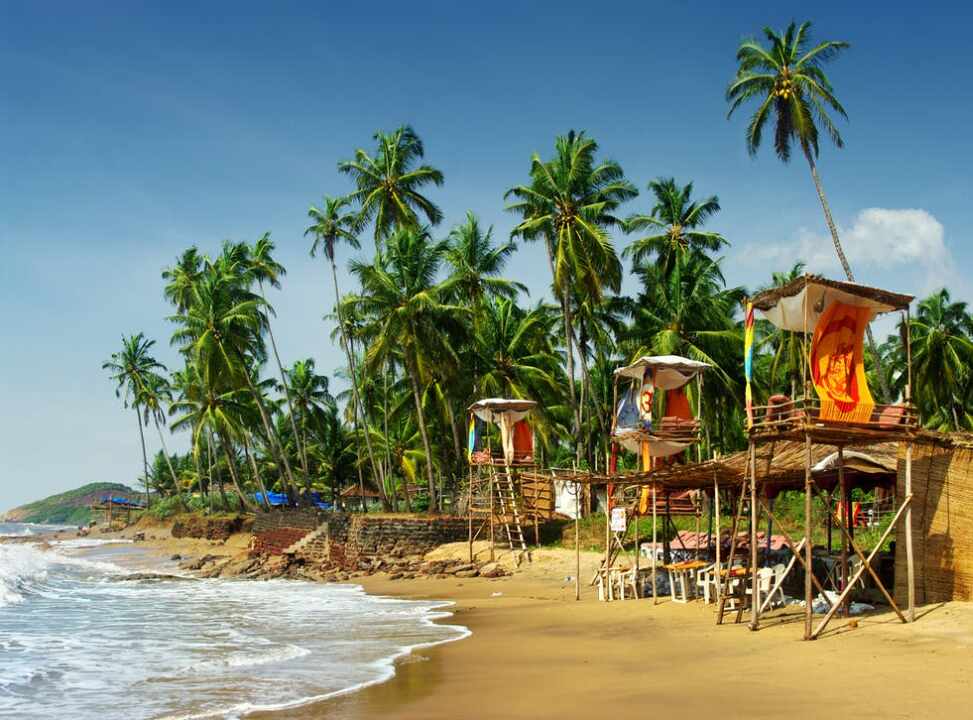Undoing injustice
Goa has come a long way in improving its economic situation in the 75th year of its independence from the exploitative clutches of Portugal

Goans are celebrating the 75th anniversary of the Goa Liberation Movement today. The state achieved independence from 450-year long colonial rule by the Portuguese on December 18, 1961,
The liberation movement was started by Ram Manohar Lohia on June 18, 1946. Juliao Menezes, who was originally an inhabitant of Goa, also played a crucial role alongside Lohia. They together pioneered the civil disobedience movement against Salazar's dictatorial regime in Goa, and led many other movements against the Portuguese further.
Menezes attended Berlin University in the 1920s and graduated in medicine; he met Lohia at the same university. On 10th June 1946, Lohia visited Menezes at his Goa home in Assolna, where they discussed the prevailing situation in the state and decided to protest against the ban on public meetings imposed by the Portuguese government. This is said to be the first civil disobedience movement against Portuguese rule. The movement that started with small revolts in the 19th century, gained greater momentum during the period between 1940 and1961.
The Portuguese defeat in Goa could be attributed to certain causes. Firstly, the Portuguese commerce across western Portugal lost its empire due to the changing world order resulting from the second World War; colonialism was no longer accepted across the world. Secondly, the power centre shifted from Europe to America. Thirdly, the Portuguese administration in Goa was very corrupt, bribery had become a norm, and Portuguese officers were selfish. Also, the top generals had died in the war, and lower rank officers were incapable of continuing the Portuguese rule.
Delving deeper into the history, in 1492, Goa became a part of Adil Shah's Bijapur Sultanate with Goa Velha declared as the second capital. The Portuguese, under the leadership of Afonso de Albuquerque, the second viceroy, invaded Goa in 1510 for defeating the Bijapur Sultanate and succeeded in the attempt with the help of the Hindu Vijayanagar empire.
Goa was the base for Albuquerque's conquest of Malacca in 1511 and Hormuz in 1515. Even, Albuquerque started a Portuguese mint in Goa. Albuquerque wanted to make it a colony and a naval base. Goa was also made capital of the Portuguese Kingdom in Asia.
Portuguese control over the sea of South Asia enabled control over the lucrative spice trade during the 16th century. At that time, agriculture was the main source of income for two-thirds of the population of Goa. Apart from this, mango, cashew, coconut, banana, pineapple, jackfruit, paddy, ragi, sugarcane, groundnut, brinjal gourd, long beans etc. were cultivated in Goa.
Goods from all eastern countries were available at the Goa market. Bahrain's pearls, China's porcelain and silk, Portugal's velvet, and drugs etc. were among these products.
Portugal had a service-based mixed economy in which the government had privatised many state-controlled firms. However, their economy was running with the help of revenue and trade benefits which particularly came from Goa. Their main goal was to trade, and not conquest.
Portuguese made no capital investment in Goa. They instead went for reckless exploitation of mineral wealth in this small area. As many as 375 mining leases for the extraction of iron and manganese ores were made. Despite being the world's richest country at the time, Portugal didn't use the revenue and profits rationally. As a result, they gradually became one of western Europe's poorest countries in the 20th century.
After independence, Goa accelerated its efforts for improving the economic conditions. The state's economy is now in good condition. Agriculture remains the backbone of the economy by providing livelihood to two-thirds of the population. Northern Goa borders Maharashtra while the southern area is bordered by Karnataka. Goa has a good treasure of biodiversity, spices and other agricultural produce. Besides, Goa also has a strong presence in mining, tourism, and pharmaceutical sectors.
According to the Economic Survey, the gross state domestic Product (GSDP) of Goa showed a 12.14 per cent growth during 2017-18 over the previous fiscal. The state government, during the budget 2019-20, estimated the state GDP at Rs 84,889 crore. The GSPD estimates at current prices for the year 2020-21 (advanced) is estimated at Rs 92,261 crore. Goa's per capita income (advanced) at current prices is Rs 5.92 lakh which is the highest in the country.
Goa's economic growth is driven by the splendid performance of industrial sectors such as mining, tourism, and pharmaceuticals. In the sector of power generation also, Goa is steadily becoming self-reliant. For example, as of November 2020, Goa had a total installed power generation capacity of 584.83 Megawatt (MW).
There is no doubt that the economic condition of Goa was not good at the time of the Portuguese, but today, the economic condition of Goa is constantly improving.
Views expressed are personal



